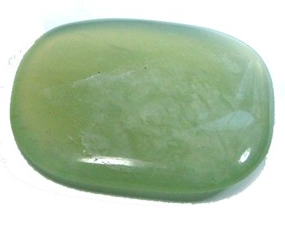One of the most troubling and perplexing characteristics of the gem trade for beginners is the widespread use of trade names and misnomers for gemstones.
Most of the time, the names are not intended to deceive. Over time, the usage of a certain name becomes so commonplace in the trade that buyers are expected to know, for example, that “Korean” Jade is really serpentine, not jadeite or nephrite, the two varieties of jade. Similarly, all black onyx is dyed and has been dyed since Roman times.
commonplace in the trade that buyers are expected to know, for example, that “Korean” Jade is really serpentine, not jadeite or nephrite, the two varieties of jade. Similarly, all black onyx is dyed and has been dyed since Roman times.
Nevertheless, this can be confusing for the beginner and it must be said that some dealers–not many, but a few–do misrepresent materials.
The best advice is to be wary of gemstone names which have some kind of descriptor at the beginning. For example, there is no such thing as blue topaz in nature. The blue topaz you see is grey or otherwise unattractively colored topaz that is heat treated or irradiated. In the trade, you will hear descriptors such as “London” blue topaz or “Swiss” blue topaz. These do not denote place of origin but rather are names given to the treated topaz.
Please remember that many, if not most gemstones, are treated in some way and there is nothing “wrong” with a treated gemstone. Some treatments, in fact, are crucial for protecting the stone. The trouble usually occurs when a buyer is not educated about specific treatments and is then shocked and surprised when the material turns out to be something it is not.
If you are buying at shows, dealers are extremely reluctant to accept returns so if you’re just starting out and are concerned about a certain material, ask the dealer. If he or she is impatient or brushes off the question, buy somewhere else.

